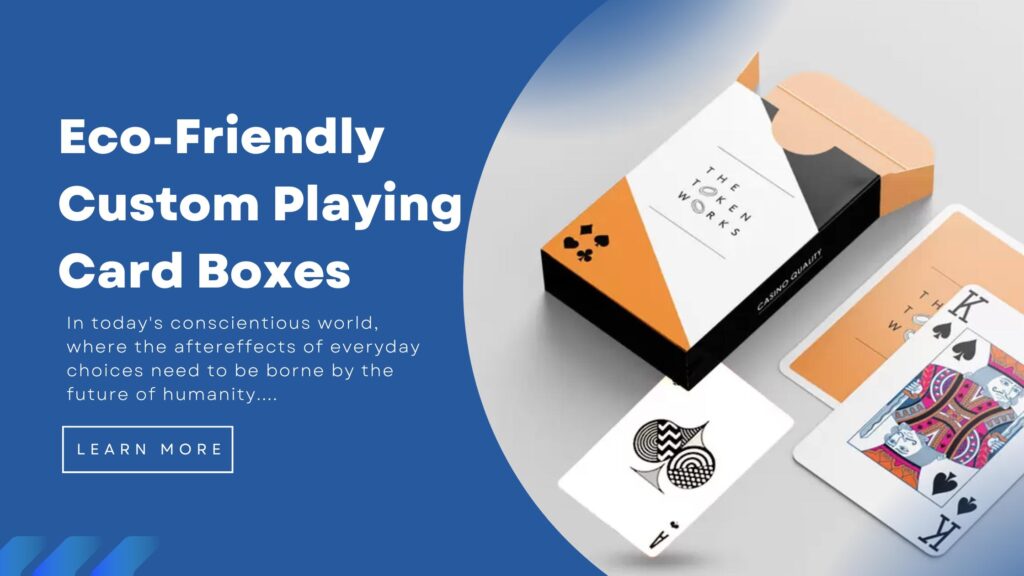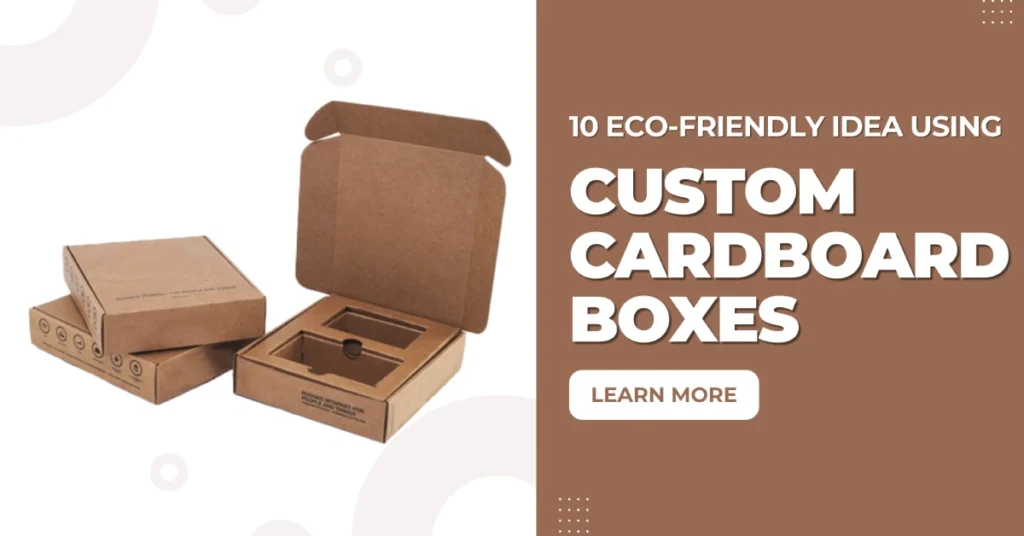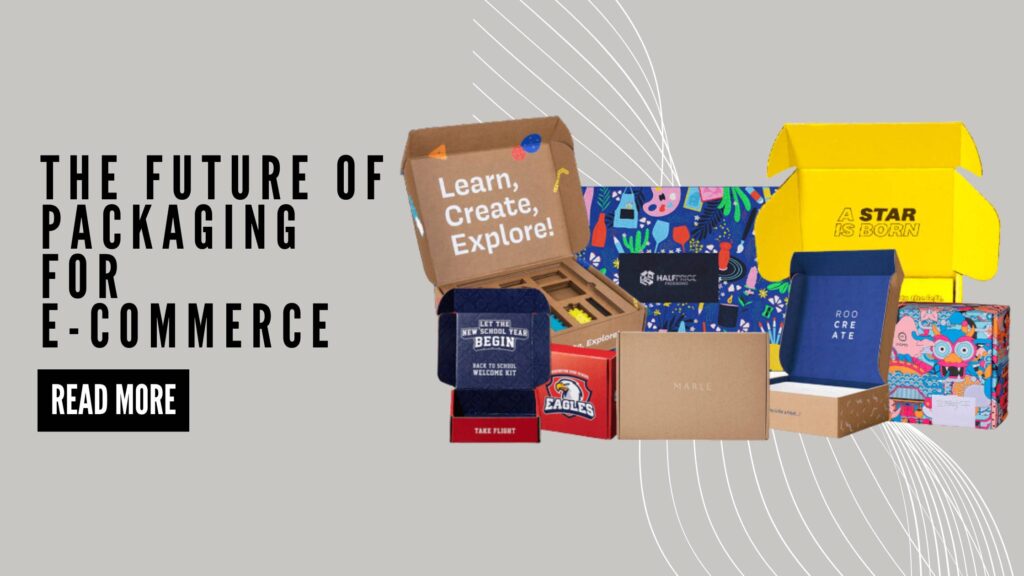In today’s conscientious world, where the aftereffects of everyday choices need to be borne by the future of humanity, businesses are rapidly changing gears toward sustainable packaging. It certainly is no different in the case of playing card manufacturers and distributors. Whereas up until lately, the majority of the custom playing card boxes were made from non-recyclable material, all that is now changing towards a greener perspective.
Not only is it good for the environment, but it also has increased appeal for eco-conscious consumers. The following blog looks into eco-friendly playing card boxes, the sustainable materials used in them, and design practices that guarantee environmental protection with market appeal.
Why Eco-Friendly Packaging for Playing Cards?
Sustainability is no longer just a buzzword but rather a growing movement inspired by consumer demand to support brands that are doing their part for the environment. For companies manufacturing playing cards, the use of eco-friendly packaging can:
1. Minimize Environmental Impact: Waste in landfills and other forms of pollution result from traditional plastic-based packaging; the alternatives will help reduce carbon emissions.
2. Enhance Brand Image: Consumers are likelier to make purchases from brands that show they care about the environment. The availability of sustainable packaging options builds brand loyalty.
3. Legislation Compliance: Many countries are now implementing tight packaging legislation, requiring environmentally friendly materials. Early adoption may keep a business from potential legal complications.
4. Save Money over the Long Term: In many sustainable materials, though expensive in their initial investment, they are often offset by savings in waste disposal fees and reduced material use.

Sustainable Materials for Custom Playing Card Boxes
To manufacture eco-friendly packaging, it is highly important to select materials that can be sourced from renewable resources, biodegradable, or recyclable. Below are some of the most common sustainable materials used in making custom playing card boxes:
1. Recycled Cardboard
One of the most common and less harmful materials used in packaging is recycled cardboard. It is manufactured from previously used paper products, reducing the need for virgin production immensely. Cardboard is highly recyclable, biodegradable, and comes in a range of thicknesses to suit the needed durability for custom playing card boxes.
2. Kraft Paper
Kraft paper is another popular eco-friendly material, considering toughness and recyclable ability. It is originally from wood pulp and, during its processing, goes through fewer chemical applications that retain its natural color and texture. Custom playing card boxes can be comfortably printed on kraft paper by using eco-friendly inks, making it the best choice for those brands that intend to add a feel of natural and rustic touch in packaging.
3. Biodegradable Plastics
For brands that want a little more durability and resistance to moisture, biodegradable plastics made from renewable sources such as cornstarch or sugarcane are a great alternative. Although these materials implement the same properties as conventional plastics, they break down at a much faster pace and offer a very minimal negative impact on the environment.
4. Post-Consumer Waste (PCW) Materials
Post-consumer waste materials are recycled products after they have been used and landfilled by consumers. Adding PCW materials to custom playing card boxes reduces demand for virgin material and decreases the amount of waste that goes to the landfill.
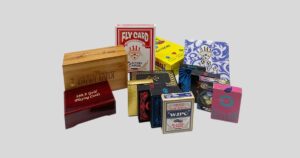
Environmental Safety of Custom Playing Card Boxes: A Design Perspective
The simple fact that sustainable packaging involves using the right materials; to be considered genuinely sustainable, the design of custom playing card boxes themselves plays an essential role. Following are some of the eco-friendly design practices one may want to consider:
1. Minimalist Packaging
Excessive packaging contributes not only to waste but also to increased resources in production. A minimalistic approach will have companies create sleek, simple designs that use less material but still offer ample protection for playing cards.
The minimalist packaging may also be helping the aesthetic appeal of the product, taking it to a modern look and an eco-conscious look. Design packaging with snug fits for the product to minimize material use. Use a minimum amount of ink when printing, mainly using the necessary branding elements that need to be employed.
2. Flat-Pack Design
The concept of flat-pack packaging is about designing for shipment and storage as flat packages to reduce the space needed for shipment and storage. It would, therefore, minimize trips, fuel consumption, and carbon footprint. Once it has reached the consumer, the packaging could be easily assembled into its final shape.
3. Soy-Based Inks
Standard inks are made with toxic chemicals and solvents, which can leach into the environment when printing and/or recycling. Soy-based ink is derived from renewable soybean oil and presents a more environmentally-friendly alternative for printing. Toxicity is minimized and vibrant colors are achieved using these inks with minimal environmental damage.
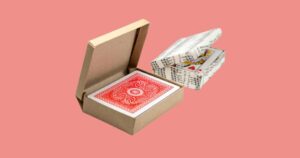
Marketing Your Environmentally Friendly Custom Playing Card Boxes
Once you have designed your green packaging, you now have to communicate your care for the environment to the customers. Following are some avenues you could take in order to promote your eco-friendly initiative:
1. Leverage Eco-Friendly Certifications
Certifications such as the Forest Stewardship Council (FSC) or Cradle to Cradle (C2C) can add validity to your claims of sustainability. Such certifications will ensure your materials and processes are tested against high environmental parameters.
2. Indicate Sustainability on Packaging
Impress directly on your packaging information that will educate your customers that even the packaging itself is eco-friendly. You can then print messages like “100% Recycled Materials” or “Biodegradable Packaging” directly onto the box for awareness.
3. Leverage Digital Marketing
Develop relevant content, like blog posts or social media campaigns, that inform consumers about the importance of eco-friendly packaging for merchandise. This helps your brand resonate with those environmentally conscious customers.
4. Practice Transparency in Communication
Consumers love honesty. Share with them how you’ve achieved sustainable packaging and any other future goals you may have. Transparency builds trust and shows that your brand is not only serious about their overall business but the environment as well.
Conclusion
Eco-friendly custom playing card boxes aren’t just a fad. It’s really a jump into the much-needed direction of sustainability for packaging in general. Coupled with design practices that are friendly to the planet, companies will be able to cut their overall environmental impact while attempting to target the increasingly eco-conscious consumer. The recycling of cardboard and kraft paper, among other more minimalistic designs and the use of soy-based inks, there are plenty of ways packaging can be gorgeous and green. By investing in these practices, you’re helping the planet and placing your brand at the frontiers of responsible business.
